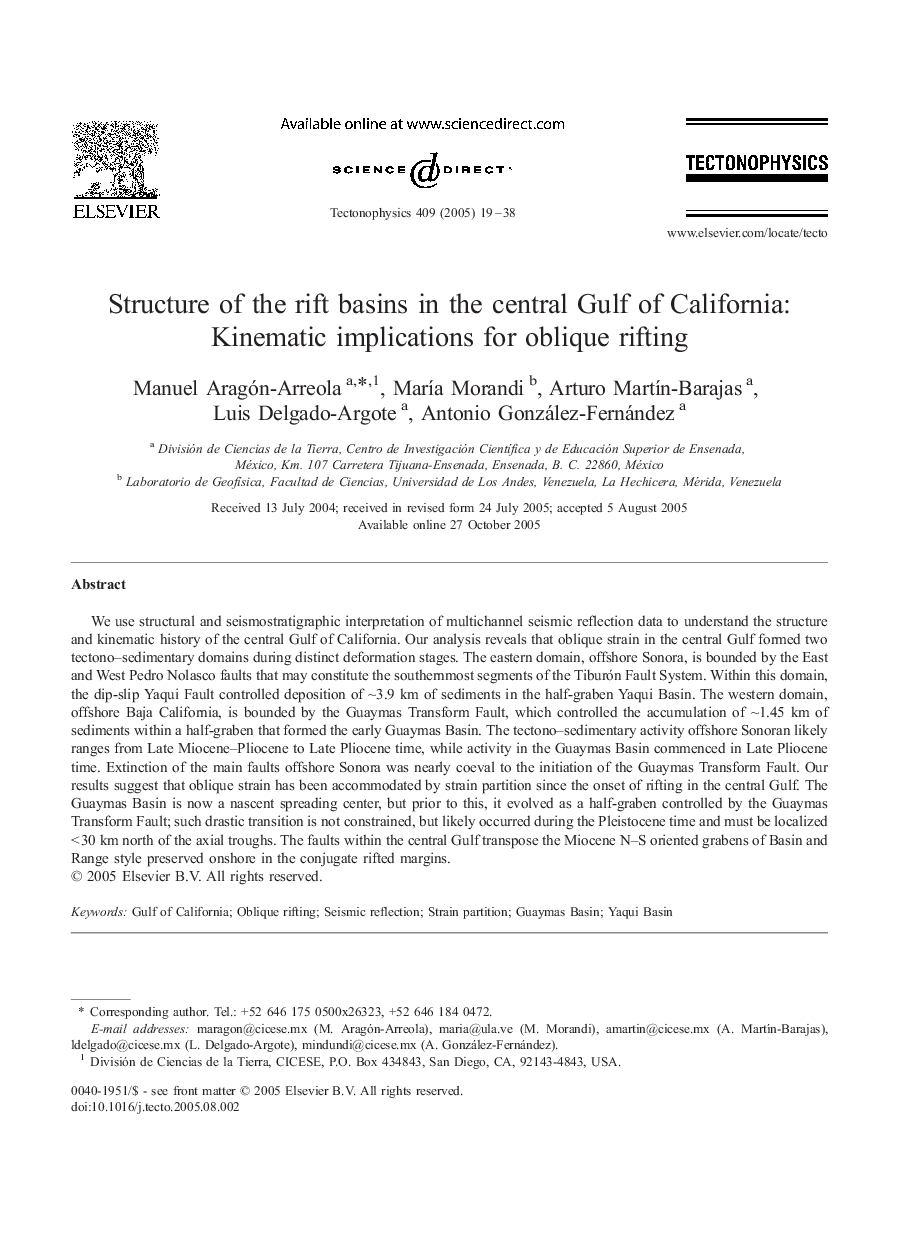| Article ID | Journal | Published Year | Pages | File Type |
|---|---|---|---|---|
| 9526927 | Tectonophysics | 2005 | 20 Pages |
Abstract
We use structural and seismostratigraphic interpretation of multichannel seismic reflection data to understand the structure and kinematic history of the central Gulf of California. Our analysis reveals that oblique strain in the central Gulf formed two tectono-sedimentary domains during distinct deformation stages. The eastern domain, offshore Sonora, is bounded by the East and West Pedro Nolasco faults that may constitute the southernmost segments of the Tiburón Fault System. Within this domain, the dip-slip Yaqui Fault controlled deposition of â¼3.9 km of sediments in the half-graben Yaqui Basin. The western domain, offshore Baja California, is bounded by the Guaymas Transform Fault, which controlled the accumulation of â¼1.45 km of sediments within a half-graben that formed the early Guaymas Basin. The tectono-sedimentary activity offshore Sonoran likely ranges from Late Miocene-Pliocene to Late Pliocene time, while activity in the Guaymas Basin commenced in Late Pliocene time. Extinction of the main faults offshore Sonora was nearly coeval to the initiation of the Guaymas Transform Fault. Our results suggest that oblique strain has been accommodated by strain partition since the onset of rifting in the central Gulf. The Guaymas Basin is now a nascent spreading center, but prior to this, it evolved as a half-graben controlled by the Guaymas Transform Fault; such drastic transition is not constrained, but likely occurred during the Pleistocene time and must be localized <Â 30 km north of the axial troughs. The faults within the central Gulf transpose the Miocene N-S oriented grabens of Basin and Range style preserved onshore in the conjugate rifted margins.
Related Topics
Physical Sciences and Engineering
Earth and Planetary Sciences
Earth-Surface Processes
Authors
Manuel Aragón-Arreola, MarÃa Morandi, Arturo MartÃn-Barajas, Luis Delgado-Argote, Antonio González-Fernández,
